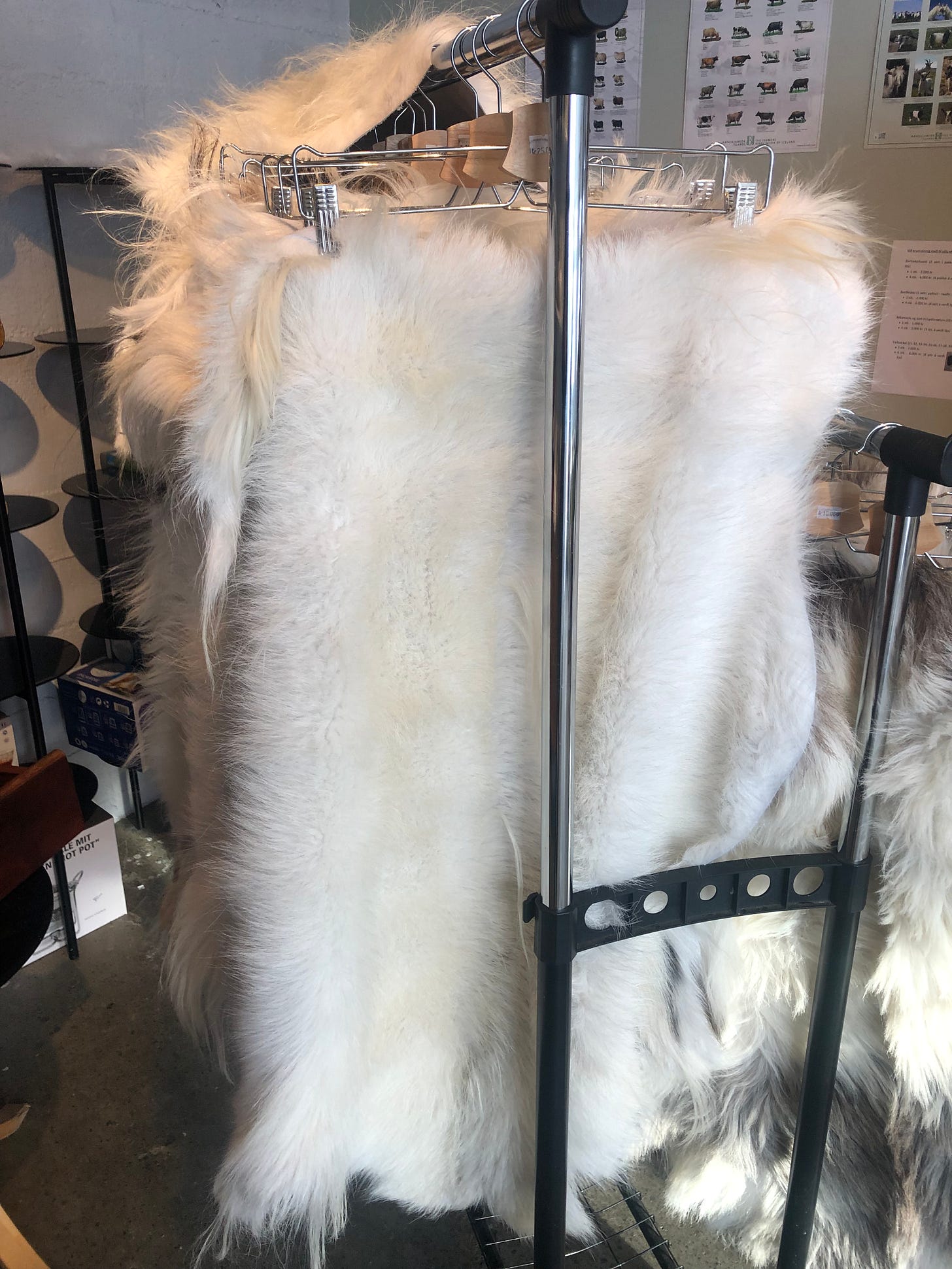One unique aspect of livestock rearing in Iceland is the existence of indigenous “settlement breeds” that have remained uninfluenced by imported animals due to geographic isolation, folk knowledge, and government policy. The goats here descend from those brought by Norwegian settlers in the 9th century, and no other goats have been imported since then. The dairy cattle (27,000), and sheep (400,000) both have healthy populations. Today there are around 1,400 goats, and strong efforts to revive the breed, which could have been lost without the efforts of farmers such as Johanna Thorvaldsdottir.
The large role that goats formerly played is shown by the number of farms and places that have the word for goat in their name. The goats had gone from being the main livestock animal to being under appreciated; people considered them naughty, smelly, and inedible. As accurate as the mischievous and aromatic labels may be, goats are absolutely edible, and it’s unclear to me how that myth could come about, unless is was just a general preference for sheep meat. Their numbers dropped below 100 in the 1960s when a government supported effort was launched to save the breed. In 1999 there where only 4 left of a polled (hornless) brown line, and just before they were to be sent for slaughter, Johanna bought them and began breeding, she now has over 200. Strict bio security regulations intended to prevent the spread of disease required her to quarantine for 10 years without selling any because they came from another part of Iceland. She was in heavy debt made worse by a financial crisis, and the bank threatened to take the farm and would have destroyed her herd. A Crowdfunding effort raised the money to keep the farm. Then she began milking.
She now has a few cheeses made at another creamery, and is in the process of building her own. She hopes to one day be allowed to make raw milk cheeses, and dreams of developing a Robiola. Johanna pens the goat kids at night, milks the does in the morning, and then allows the kids to be with mom during the daytime. She doesn’t get as much milk this way, but feels it is right and leads to a healthier herd. The goat is a Slow Food presidium and part of a well established farming system that could be uniquely embodied in cheese form. Cheeses can be rallying points for these breeds, cultural practices, and food ways.
In her farm store she sells cheese, jellies and syrups she makes from flowers and berries, a delicious goat pate, and goat hides, which are very soft and hand tanned by a local man. Like other settlement breeds, the goats were never bred to conform to a standard color or pattern so they have a wide variety of coats. I am immediately drawn to the colorful hides of long soft hair, including those from lambs and kids that died while very small. I always admire farmers who can utilize their entire animal, it is respectful and the right approach when you raise a breed that produces small amounts of milk. All livestock breeds give us multiple gifts, if we are going to take the milk then we should use the meat, hides and fiber as well I feel. And I’m not the only one.
She also sells products made from her goat’s cashmere. Many goat breeds have a shorter, softer layer of fleece beneath the longer guard hairs. This can be combed out and used to make yarn, felted, or processed into many products. Cashmere is an amazing natural fiber, I always travel with a sweater made of it that resists getting dirty or taking on odors as well as being light and warm. The wearing of animals hides and fibers is an important human adaptation that has allowed us to survive in harsh climates. We are the animal that becomes the others, we learn from and mimic them, hunt them and raise them. This doesn’t need to be cruel or barbaric, it is a part of who we are. The animals die so we can live, so many of us are ready to reclaim the dignity of this relationship, acknowledge and honor the sacrifice. People like Johanna. To leave behind the raising of livestock, to lose these breeds, would be a tragedy. To save them, work with them again, can be a part of healing a broken relationship.













As always I am enamored of your evocative writing style, but in this piece you state so honestly, lovingly and well how the human relationship to animals we utilize for food can and should look. This farm and farmer embody this ideal, and we are so grateful to you for sharing her story.